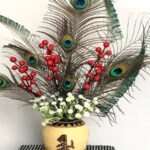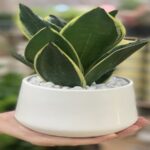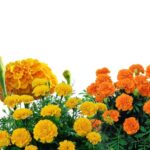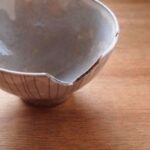Bougainvillea, also known as Paper Flower, is a plant with a simple yet captivating beauty. With its scientific name, Bougainvillea spectabilis, this plant belongs to the Nyctaginaceae family and is native to Brazil in South America. Due to its adaptability and hybridization, it has spread to various countries with tropical climates, including Thailand and the United States, and is now widely cultivated in Vietnam as well.
1 Introduction to Bougainvillea
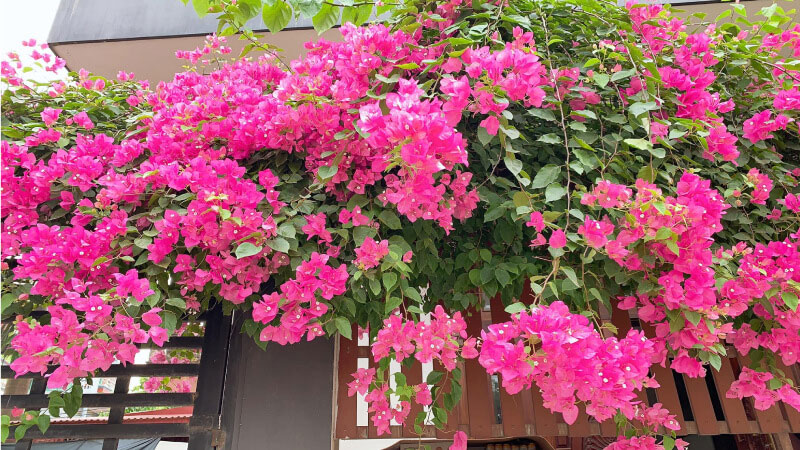 Bougainvillea, or Paper Flower, captivates with its simple beauty.
Bougainvillea, or Paper Flower, captivates with its simple beauty.
Bougainvillea, often referred to as Paper Flower due to its delicate, paper-like petals, is a resilient plant that thrives in tropical climates. Its scientific name, Bougainvillea spectabilis, derives from its appearance, resembling thin yet sturdy paper with remarkable drought tolerance and year-round blooms. The true flowers are small and tube-like, usually white or yellowish, and are surrounded by three colorful bracts that give the plant its vibrant hues.
Research indicates that bougainvillea originated in Brazil, South America, and has since been introduced to other countries, particularly those with tropical climates. Its adaptability and hybridization have led to the development of various cultivars, such as Thai and American bougainvillea. Vietnam’s tropical climate provides an ideal environment for growing this beautiful plant, and it is commonly cultivated for ornamental purposes and shade.
2 Characteristics of Bougainvillea
 Bougainvillea is easy to grow and care for, but it’s important to understand its characteristics for successful cultivation.
Bougainvillea is easy to grow and care for, but it’s important to understand its characteristics for successful cultivation.
Bougainvillea is a woody, climbing plant with vigorous growth and numerous branches covered in thorns. Its leaves are a deep shade of green and are oval-shaped, with a pointed tip and a slightly curved base. They grow in an alternate pattern along the stems.
The true flowers of bougainvillea form clusters at the end of the branches, and while they may vary in color, it is the colorful bracts that give the plant its vibrant appearance. The bracts come in various colors, including pink, purple, red, orange, white, and yellow, creating a stunning display. The fruit of the bougainvillea is a rounded achene, rarely seen, and brown in color.
3 Significance and Benefits of Bougainvillea
Feng Shui Significance
 The vibrant colors of bougainvillea flowers symbolize good luck, wealth, and prosperity.
The vibrant colors of bougainvillea flowers symbolize good luck, wealth, and prosperity.
In Feng Shui, bougainvillea is believed to represent abundance, protection, and happiness due to its lush, climbing nature. The bright and varied colors of its flowers are associated with good luck, wealth, and prosperity for the household. Additionally, in folk beliefs, bougainvillea is thought to ward off evil spirits and bring positive energy.
Significance in Love
 Bougainvillea represents simple, enduring, and sincere love.
Bougainvillea represents simple, enduring, and sincere love.
The beauty of bougainvillea lies in its simplicity and purity, and its resilience in harsh conditions symbolizes enduring and sincere love. Its vibrant colors and delicate petals convey a sense of romance and passion.
Significance of Color Variations
 Each color variation of bougainvillea carries a unique meaning and symbolism.
Each color variation of bougainvillea carries a unique meaning and symbolism.
The various colors of bougainvillea flowers convey distinct meanings:
- Red Bougainvillea: Represents determination, strength, and ambition.
- Pink Bougainvillea: Symbolizes gentleness, femininity, and a touch of sentimentality.
- Purple Bougainvillea: Embodies loyalty and creates a romantic, captivating atmosphere.
- White Bougainvillea: Stands for purity and innocence.
Additionally, when choosing a bougainvillea color, consider the homeowner’s birth element and select a complementary color for good luck (e.g., yellow for bougainvillea’s mutually beneficial element).
4 Benefits of Bougainvillea
Bougainvillea offers a range of benefits and is widely cultivated for ornamental and landscaping purposes. Here are some of its advantages:
Bonsai Cultivation
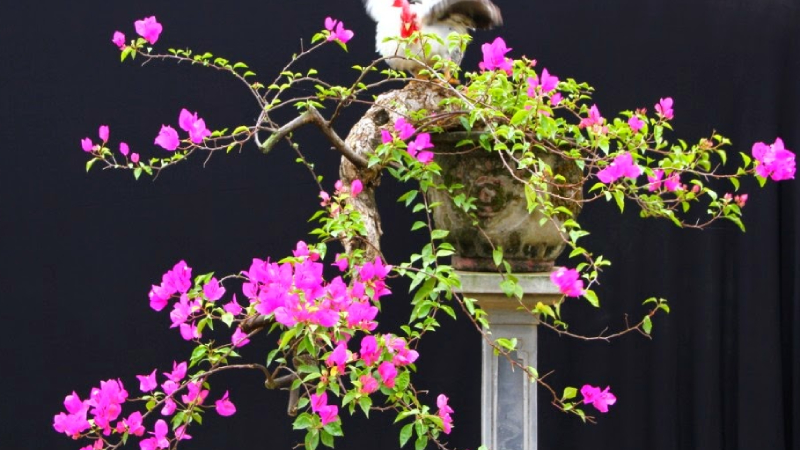 Bougainvillea is well-suited for bonsai cultivation due to its climbing nature and flexible branches.
Bougainvillea is well-suited for bonsai cultivation due to its climbing nature and flexible branches.
For those with a passion for art and gardening, bougainvillea is an excellent choice for bonsai. Its climbing habit and numerous branches make it easy to shape and style. The diverse color options also allow for creating unique and visually appealing bonsai trees.
Landscaping and Home Gardens
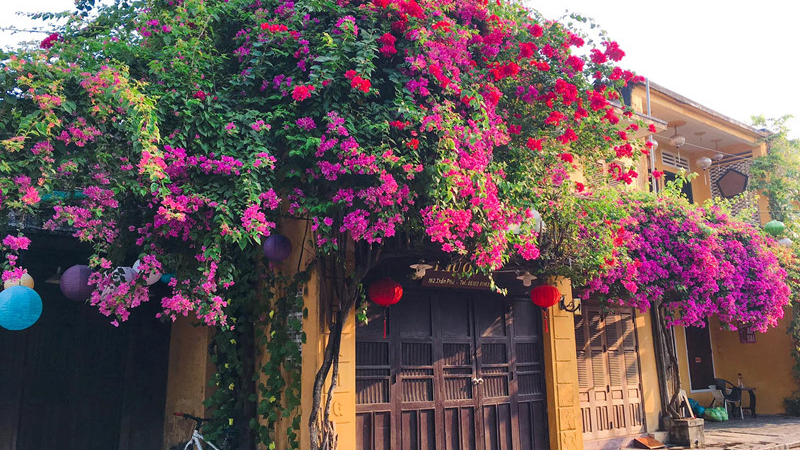 Bougainvillea adds beauty and shade to home gardens and landscapes.
Bougainvillea adds beauty and shade to home gardens and landscapes.
Bougainvillea is a popular choice for home gardens and landscapes across Vietnam due to its ease of cultivation and maintenance. Homeowners often plant it to create shaded areas or enhance the aesthetics of their gardens, such as arbors over gateways or in backyard gardens.
Urban Landscaping
 Bougainvillea is commonly used in urban landscapes due to its adaptability and ability to be shaped into various forms.
Bougainvillea is commonly used in urban landscapes due to its adaptability and ability to be shaped into various forms.
Bougainvillea is a versatile plant often used in urban landscapes. Its ability to be trained into different shapes, such as arches or hedges, along with its adaptability and tolerance for harsh conditions, makes it ideal for planting along roadsides, medians, and sidewalks.
5 Common Types of Bougainvillea
While bougainvillea is widely cultivated, many people are unfamiliar with the different types available. Here’s an overview of some common varieties:
 Thai Bougainvillea
Thai Bougainvillea
Thai Bougainvillea (Bougainvillea Spectabilis)
Thai Bougainvillea is characterized by its dual-color blooms, with some clusters in pink and others in white. It has a low leaf drop rate and flowers frequently. This variety can be propagated through cuttings and is often planted near gateways.
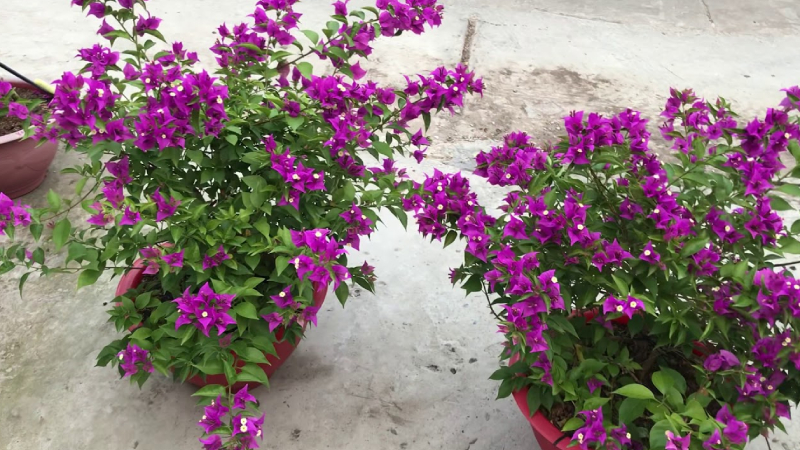 Brazilian Bougainvillea
Brazilian Bougainvillea
Brazilian Bougainvillea (Bougainvillea Glabra)
Brazilian Bougainvillea is a climbing variety that can grow on various surfaces, including walls and gateways. It exhibits the typical characteristics of bougainvillea, such as oval-shaped, deep green leaves and clustered flowers.
 Van Hoa Lau Bougainvillea
Van Hoa Lau Bougainvillea
Van Hoa Lau Bougainvillea
This variety typically produces pinkish-purple or reddish-purple flowers and is a smaller plant, making it suitable for bonsai cultivation.
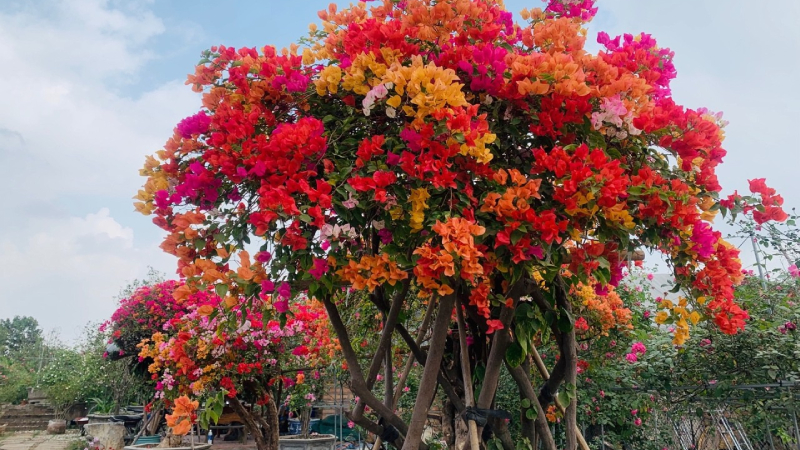 Cao Boi Bougainvillea
Cao Boi Bougainvillea
Cao Boi Bougainvillea
Cao Boi Bougainvillea is a striking variety known for its naturally occurring multicolored flowers, including red, orange, and white. Its leaves are small, with a green center and a white silver border, giving them a slightly rounded appearance.
 American Bougainvillea
American Bougainvillea
American Bougainvillea
American Bougainvillea is characterized by its compact, mushroom-like or chrysanthemum-like shape. Its leaves and flowers are small, making it well-suited for small and elegant spaces.
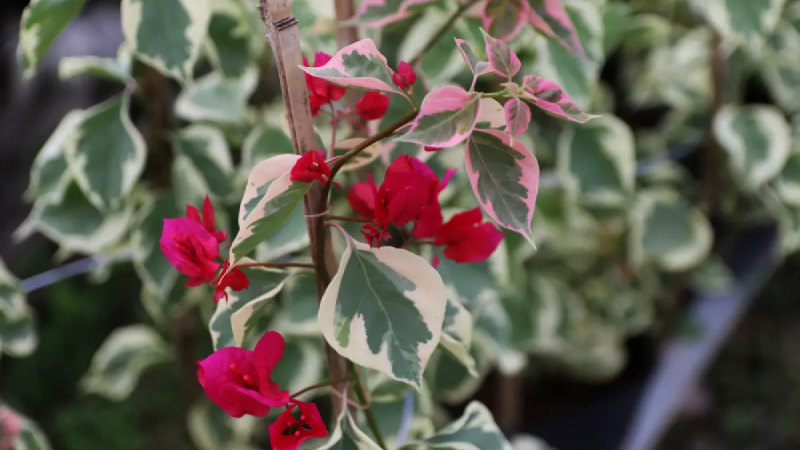 Cam Thach Bougainvillea
Cam Thach Bougainvillea
Cam Thach Bougainvillea
This unique variety of bougainvillea features white-green leaves and an abundance of flowers, making it a standout choice.
6 Planting and Caring for Bougainvillea
Planting Techniques
Preparation
- Before planting, prepare cuttings and soil to ensure the plant’s healthy growth and early flowering.
- For cuttings, select branches that are 1-2 years old, with a length of about 20cm, and have at least two nodes.
Soil Preparation: Use well-drained, nutrient-rich soil with some added sand and husk for aeration. Avoid overly moist soil as bougainvillea tolerates drought well. You can also add decomposed manure to the soil.
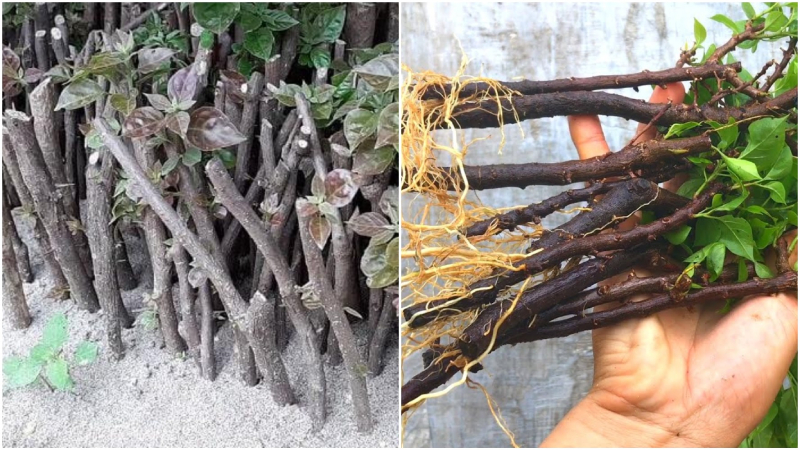 Proper cutting techniques are crucial for the plant’s development and flowering.
Proper cutting techniques are crucial for the plant’s development and flowering.
Planting
Choose a cool season for planting, such as autumn, the first two months of spring, or when the sun is milder during the day.
- Cuttings: Treat the cut end of the cutting with lime to prevent fungal infections. Tie a plastic bag over the cutting to retain moisture. Plant the cuttings at a depth of 6-10 cm, angled at 15 degrees, and spaced about 20 cm apart to allow for growth.
- Water the cuttings every 2-3 days, ensuring they receive adequate sunlight and ventilation.
Care Techniques
Proper care techniques are essential for the plant’s healthy growth and flowering:
Moderate Watering: Bougainvillea is drought-tolerant, so avoid overwatering, which can lead to root rot. Water just enough to keep the soil moist.
Monitoring: Keep an eye on the plant’s growth and watch out for any signs of pest or disease infestation.
While bougainvillea is generally resistant to pests and diseases, issues may occasionally arise. If this happens, treat the plant with agricultural chemicals and regularly cut and treat the soil.
Regular Fertilization:
To encourage flowering, fertilize the plant every two months with a balanced NPK fertilizer (1:1:1 or 2:1:2). You can also use organic or slow-release fertilizers for optimal results.
The Ancient’s Warning: The Three Roadside Omens to Avoid Bringing Home.
Introducing the ancient wisdom: a guide to avoiding household hazards. Our ancestors believed that certain items brought home could invite misfortune and disaster. Uncover the secrets to protecting your family and home from potential calamities. Prepare to embark on a journey of enlightenment, where we’ll explore the power of language and writing to create captivating content that stands out from the rest.


























